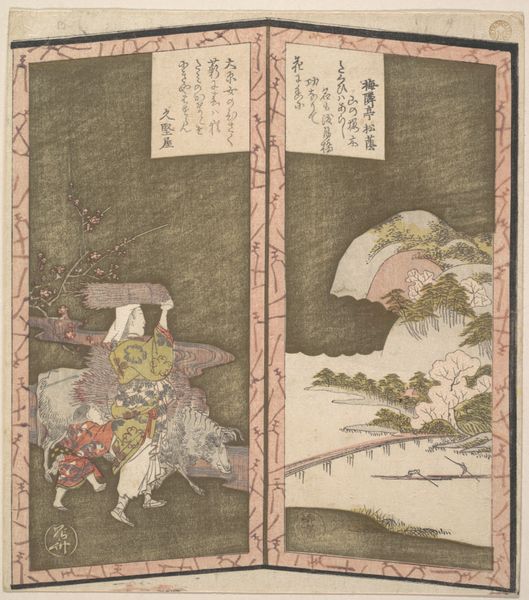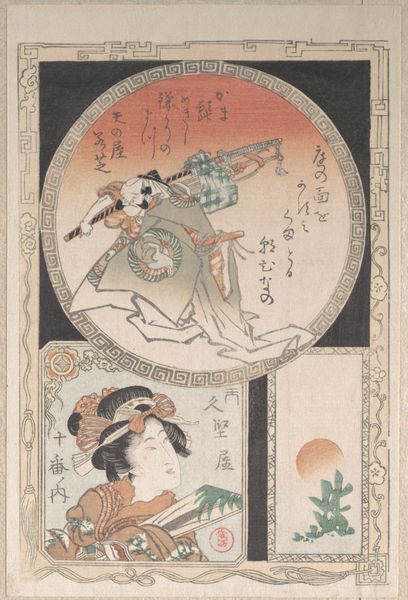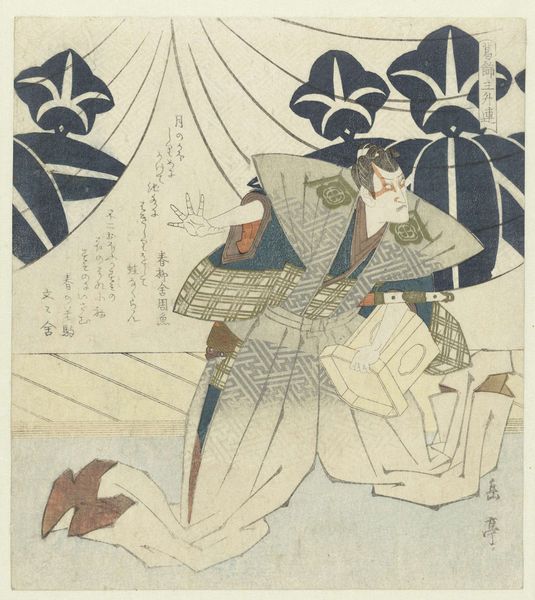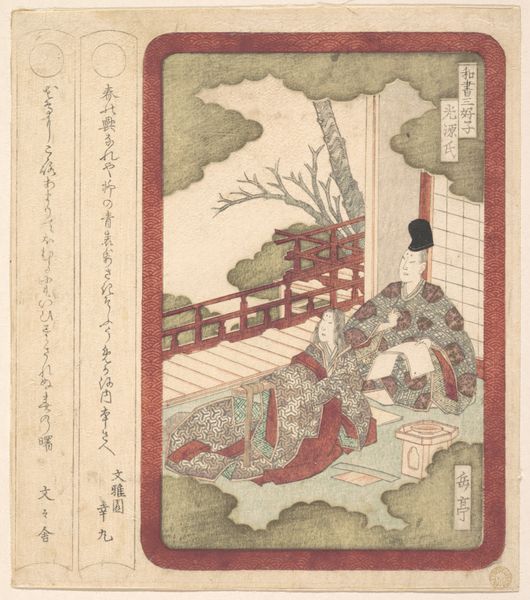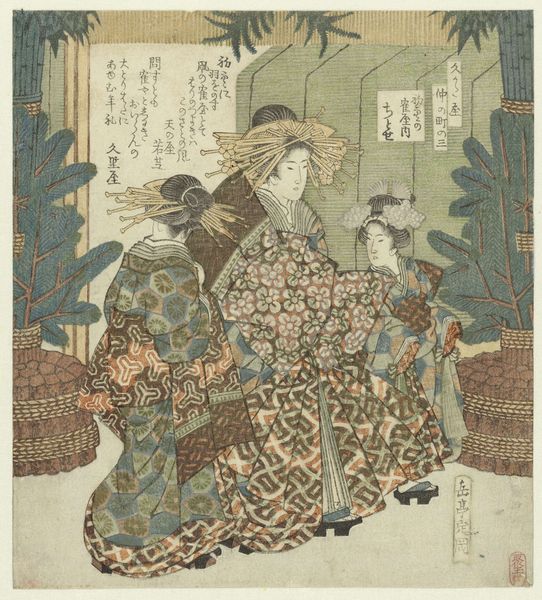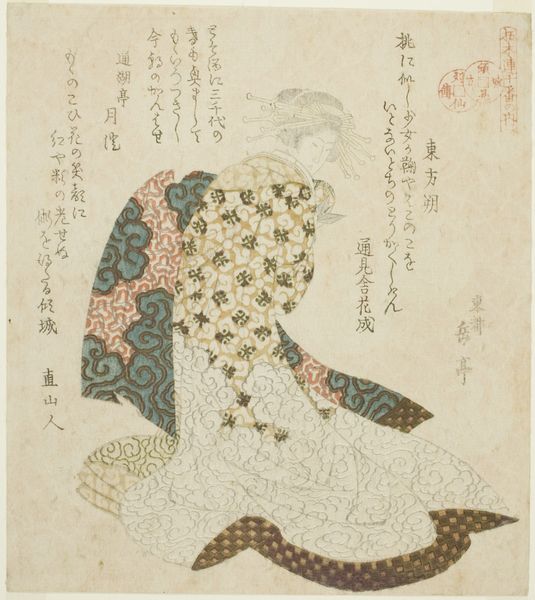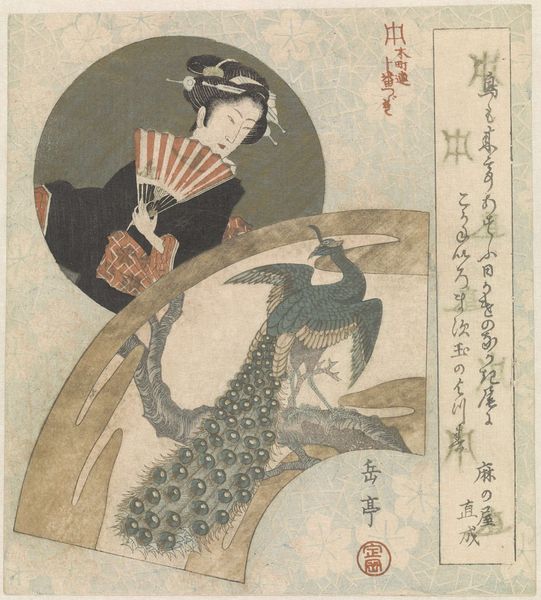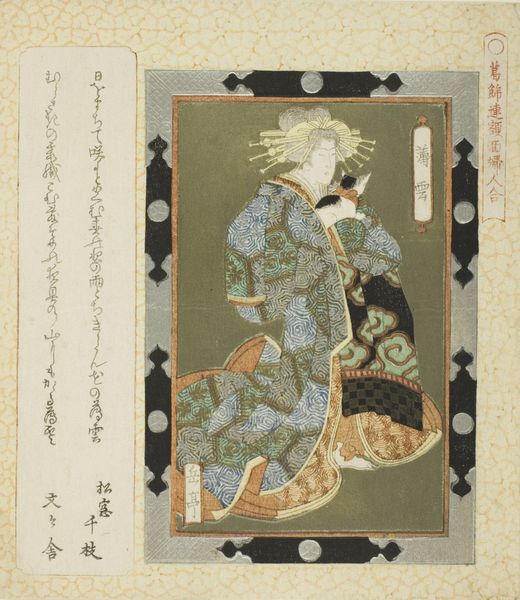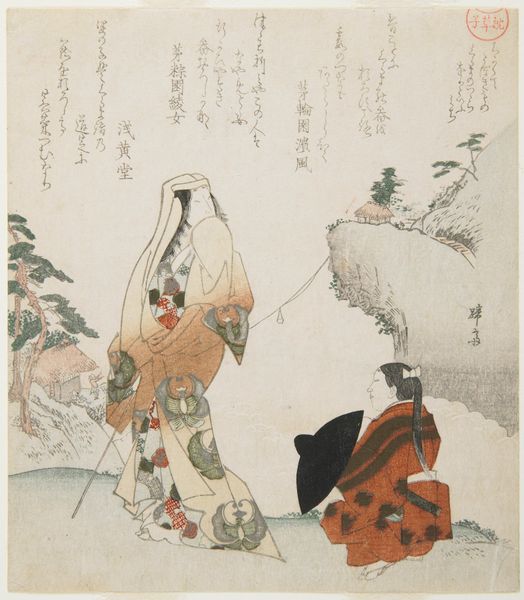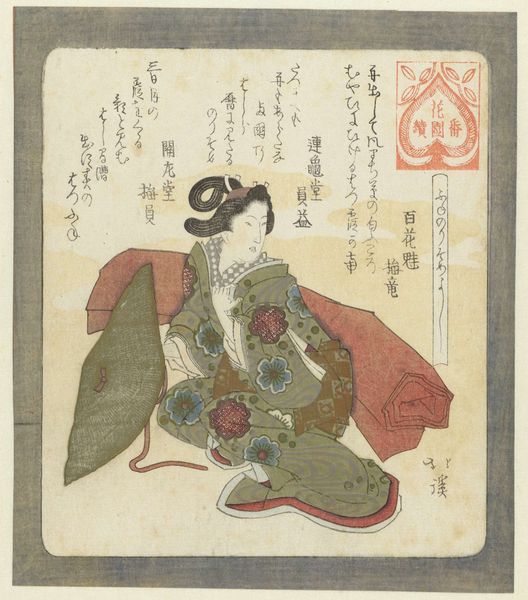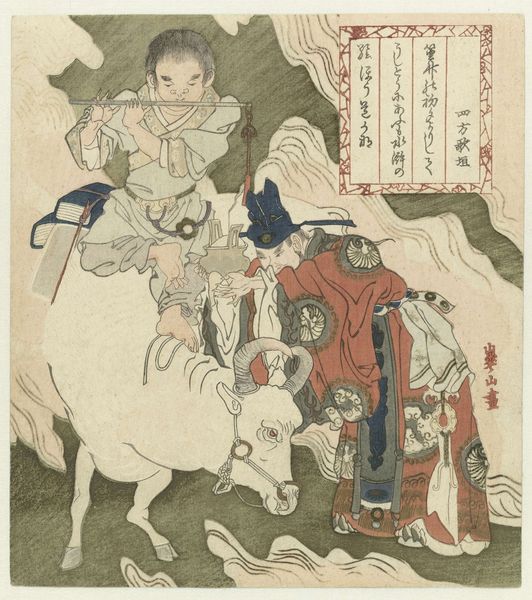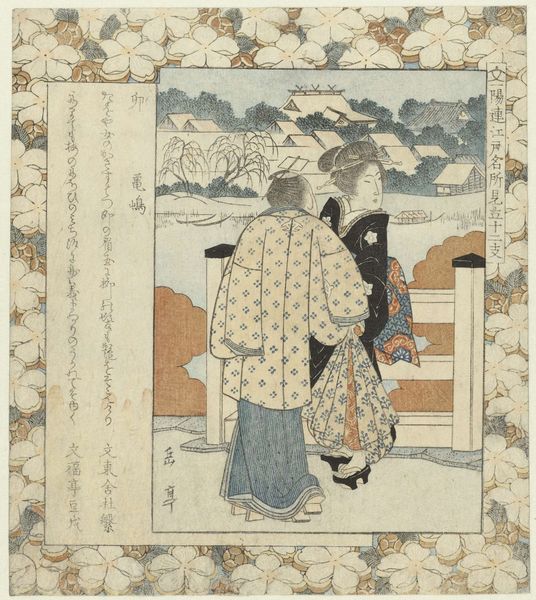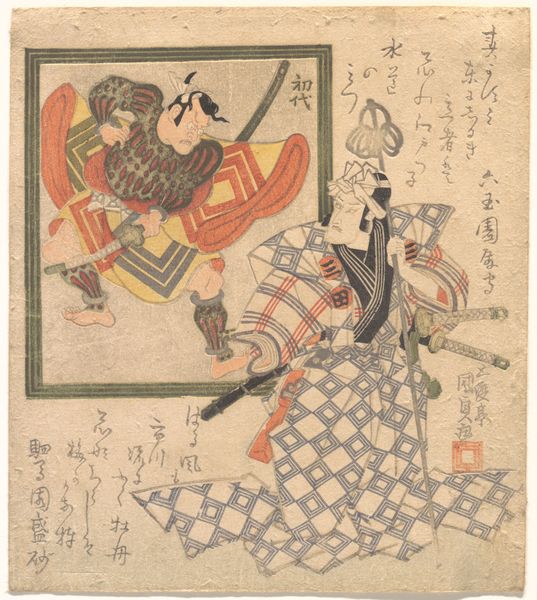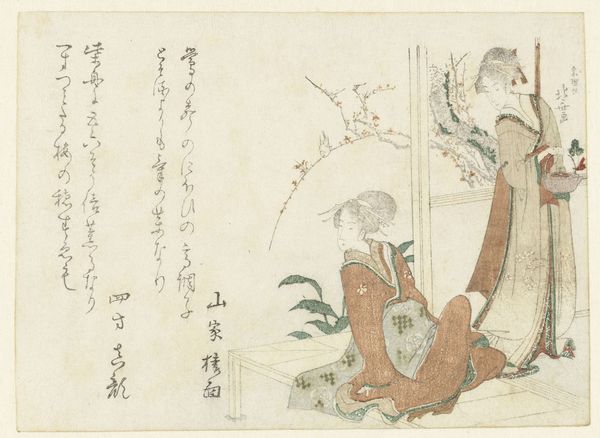
print, woodblock-print
#
portrait
#
water colours
#
narrative-art
# print
#
asian-art
#
landscape
#
ukiyo-e
#
figuration
#
woodblock-print
Dimensions: height 197 mm, width 176 mm
Copyright: Rijks Museum: Open Domain
Curator: Before us is Katsukawa Shuntei’s woodblock print, "Woman Seated by a Stag," circa 1820, a splendid example of ukiyo-e. What are your first thoughts? Editor: I’m struck by its quiet beauty. The palette is so muted and elegant. There's a real stillness about it. Curator: The scene, composed within a rectangular format bordered with delicate floral designs, depicts a woman resting outdoors, attended by a stag. Given the woodblock printing process, we have to consider the craft involved – the artisan's skilled labor in carving each block to achieve the nuances in line and color, and their access to specific tools, papers, and pigments. Editor: Absolutely, and look at how skillfully Shuntei uses line to define form. The soft curve of the hill contrasts with the angular lines of the woman's robe. The limited color palette creates a sense of harmony, and note the positioning of the woman and the stag - they mirror each other, both attentive, still, and observant. Curator: Let's delve into the social context. The woodblock prints were relatively affordable and mass produced in comparison with other types of artwork, making art accessible to wider population, in contrast to the aristocratic patronage of previous eras. This art engaged new consumers with changing ideas and tastes. Editor: Interesting. While it appears pastoral, is it not perhaps idealized? Notice that the deer is rather stylized with decorative spots and an elegant stance. In traditional composition, its form directs our gaze back towards the female figure, linking both as elements that belong to an intentionally structured whole. Curator: These images catered to the tastes of the rising merchant class, fueling a demand for representations of beautiful women, tranquil landscapes, and scenes of everyday life. Consider the commodification of leisure. The labor invested and its distribution, is essential to ukiyo-e as a genre. Editor: You make a key point, and now thinking about the placement of the text blocks near the woman and behind the stag, how much do these areas control the space around them, dictating where and how the viewer interacts with the image as a whole? Curator: Examining this print reveals much about not only aesthetic preferences, but also the developing social structures of the time. The process behind its creation mirrors wider cultural currents. Editor: For me, considering the balance of lines, colors, and shapes creates an enduring sense of serene contemplation. I find my mind emptied of immediate concerns.
Comments
No comments
Be the first to comment and join the conversation on the ultimate creative platform.
